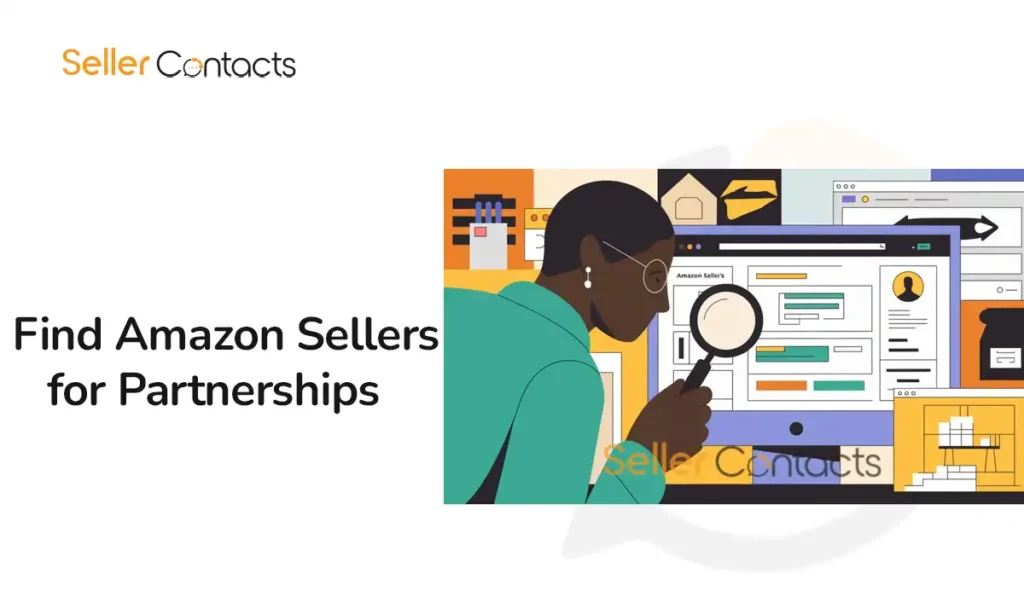How to Find Amazon Sellers for Partnerships

Building strategic partnerships with Amazon sellers can significantly boost your business. Whether you’re a service provider, manufacturer, or distributor, Amazon’s marketplace offers countless opportunities to collaborate with sellers to expand your reach. Here’s a step-by-step guide on how to find Amazon sellers for partnerships.
Why Partner with Amazon Sellers?
Amazon sellers often operate in highly competitive markets, which means they are always looking for ways to enhance their offerings. By partnering with them, you can:
- Expand Your Network: Collaborate with established sellers who already have a robust customer base.
- Boost Revenue: Joint ventures can lead to increased sales and shared profits.
- Mutual Growth: Sellers can benefit from your unique products, services, or expertise, while you gain access to new markets.
- Leverage Amazon’s Traffic: Take advantage of the millions of daily visitors Amazon attracts.
Step 1: Define Your Partnership Goals
Before starting your search, determine what you’re offering and what you’re looking for:
- Are you a manufacturer looking to supply products?
- Are you a service provider offering advertising, logistics, or customer support?
- Are you seeking co-branding opportunities with a specific niche?
Having clear objectives will help you identify suitable Amazon sellers.
Step 2: Research on Amazon
Use Amazon’s Search Bar
The simplest way to find potential sellers is by searching for products related to your business. For example:
- Search for products within your niche (e.g., “organic skincare” or “pet supplies”).
- Review the product listings to identify sellers with high ratings and significant customer reviews.
- Note the seller names, which are usually linked to their profiles.
Analyze Seller Profiles
Click on the seller’s name in the product listing to access their Amazon profile. This will provide insights such as:
- The range of products they sell.
- Customer feedback and ratings.
- How long they’ve been active on Amazon.
Identify Gaps and Opportunities
Look for sellers who could benefit from your offering. For instance:
- Sellers with high-quality products but subpar marketing could benefit from your advertising expertise.
- Those struggling with logistics may need help with fulfillment or inventory management.
Step 3: Use Third-Party Tools
Several tools can help streamline your search for Amazon sellers:
- SellerContacts: Largest Amazon seller database with 49 data points and global coverage.
- Jungle Scout: Identify top-selling products and their associated sellers.
- Helium 10: Provides insights into seller performance, product niches, and competition.
- AMZScout: Analyze seller data, sales volume, and market trends.
- Keepa: Track pricing history and seller activity.
These tools allow you to filter sellers based on revenue, product categories, or other criteria.
Step 4: Leverage LinkedIn and Social Media
Many Amazon sellers maintain a presence on LinkedIn and other social platforms to network and promote their brands. Use these platforms to:
- Search for terms like “Amazon seller” or specific niches (e.g., “Amazon private label skincare”).
- Join Amazon seller groups or forums.
- Engage with posts or reach out via direct messages to express your interest in collaboration.
Step 5: Attend Industry Events and Trade Shows
Trade shows and Amazon seller events provide excellent opportunities to meet sellers in person. Some popular events include:
- Prosper Show: Tailored for Amazon sellers and solution providers.
- ASGTG (Amazon Sellers Group TG) Conference: A hub for connecting with top-performing sellers.
- E-commerce trade shows: Broader events where you can find multi-channel sellers.
Bring marketing materials, a clear pitch, and business cards to maximize your networking efforts.
Step 6: Join Seller Communities
Participate in forums and communities where Amazon sellers actively discuss their businesses:
- Reddit: Subreddits like r/FulfillmentByAmazon and r/AmazonSeller.
- Facebook Groups: Join groups like “Amazon FBA Sellers” or “Amazon eCommerce Collective.”
- Amazon Seller Central Forums: Engage directly with sellers and explore partnership opportunities.
Step 7: Craft an Irresistible Proposal
Once you identify potential sellers, approach them with a personalized and compelling proposal. Include:
- A brief introduction to your business.
- Why you believe a partnership would be mutually beneficial.
- Specific ways you can add value to their operations.
Sample Email Template
Subject: Potential Partnership Opportunity
Hi [Seller Name],
I’m [Your Name], [Your Title] at [Your Company]. I came across your Amazon store while researching [specific niche/product], and I was impressed by your offerings.
I believe our expertise in [specific service/product] could complement your business by [specific benefit]. For example, we could help you with [specific solution].
Would you be open to a quick call to discuss this further?
Looking forward to hearing from you.
Best regards,
[Your Name]
[Your Contact Information]
Step 8: Monitor and Nurture Relationships
Once a partnership is established, it’s crucial to maintain open communication and regularly evaluate the collaboration’s performance. Use tools like Slack, Trello, or shared Google Sheets to streamline workflows and ensure mutual success.
Additional Tips for Finding Amazon Sellers
- Use Supplier Directories: Websites like Alibaba and ThomasNet often list Amazon sellers.
- Check Best-Seller Lists: Focus on products consistently appearing on Amazon’s “Best Sellers” page.
- Engage with Reviews: Sellers who actively respond to customer reviews are often more open to collaboration.
Final Words
Partnering with Amazon sellers can be a game-changer for your business. By defining your goals, leveraging Amazon and third-party tools, and building relationships through thoughtful outreach, you can establish mutually beneficial collaborations that drive growth for both parties. Start your search today, and unlock the potential of strategic partnerships in the Amazon ecosystem!
